#fernando ii
Text

Fernando de Aragón in prayers
#Ferdinand II of Aragon#Fernando II#Fernando II de Aragón#Fernando de Aragón#House of Trastamara#16th century
5 notes
·
View notes
Text
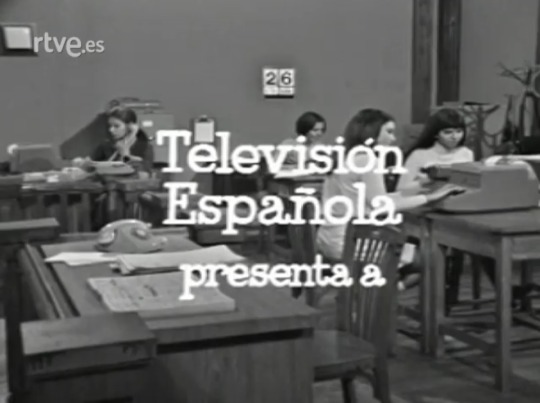
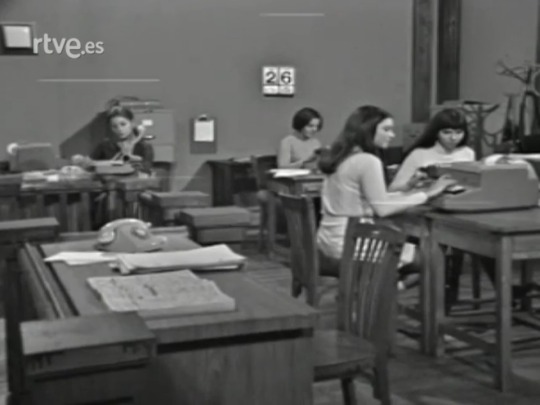
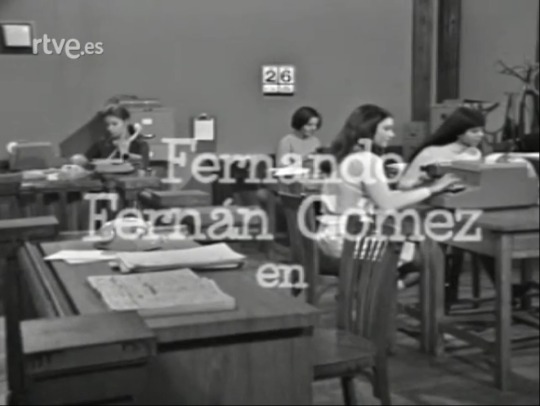

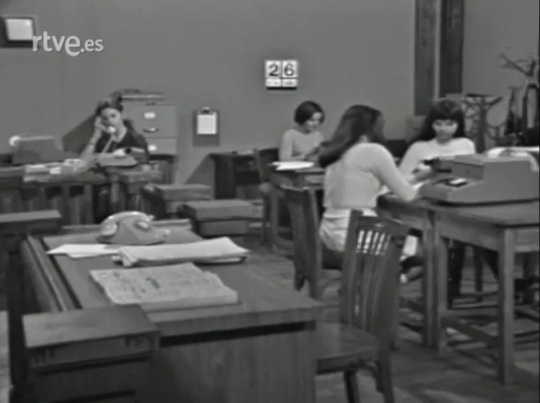






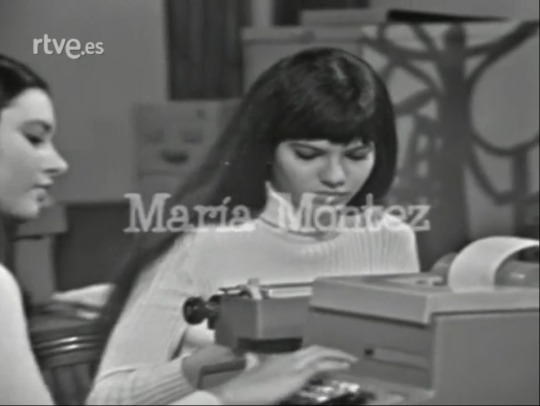
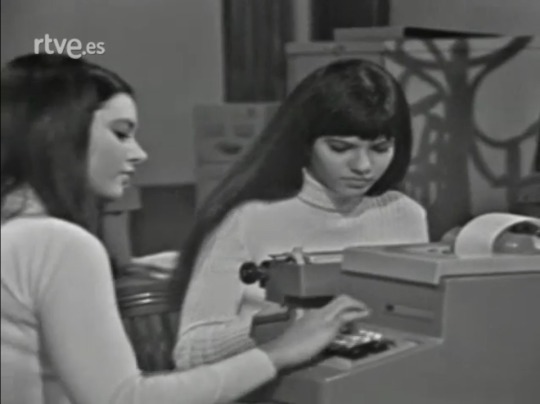
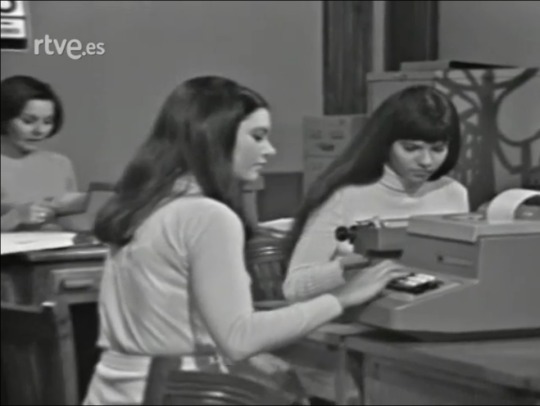

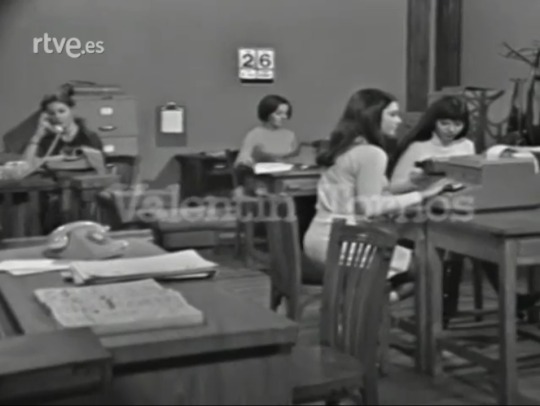

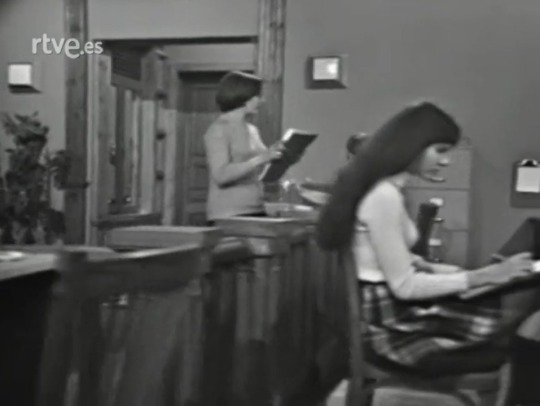
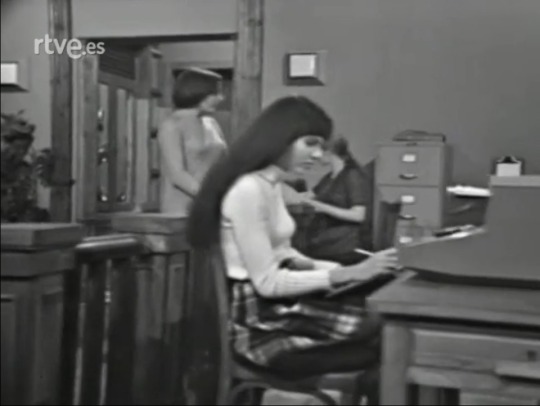






Del Dicho al Hecho, 1971 (part 1)
Spanish TV series aired in 1971, it is made up of 11 independent stories around a popular Spanish saying.
María Montez II starred in the 9th chapter called "Quien a Hierro mata, a Hierro Muere" which was aired the 26th May, she plays the role of Cuca.
In this chapter three very efficient employees are envied for this very reason by their immediate superior: Don Agustín.
Cast:
Fernando Fernán Gómez as Don Agustín
Lola Herrera as Mari Pili
Fiorella Faltoyano as Mari Loli
Teresa Rabal as Marisol
María Montez II as Cuca
SOURCES:
RTVE Play
IMDB
#Del Dicho al Hecho#Quien a Hierro Mata a Hierro Muere#MAría Montez II#MAria Montez II#1971 María M#Fernando Fernán Gómez#Lola Herrera#Fiorella Faltoyano#Teresa Rabal#Spanish TV#1970s Spanish TV#actress#TV actress#Stage actress#dancer#performer
12 notes
·
View notes
Text
The true old man fucker behavior is simping over historical figures
#fernando alonso this mark webber that 🥱🙄#arthur wellesley 1st duke of wellington 😍😍😍#im so sorry#i just have these weird moments when im in a museum or when im looking at Wikipedia#and im looking at some historical figure like 'why he kinda 😳'#you guys know my weird obsession with napoleon i digress#i wanted to see who was on the other side for Waterloo bcs au ideas and all that#and why he kinda 🫣🫣🫣#also Napoleon II was kinda a twink hehehe#and pls tell me why i was reading Napoleon's wikipedia and kinda being 🤭 over him#ngl in the personality/image section of his wikipedia theres a lot of nando coded stuff#such as:#surrounding himself with taller men that called him affectionate nicknames abt his height. okay. whore.#AND ALSO#'he had to win at everything he attempted' that is literally almost verbatim what nando said abt himself in his documentary#please someone stop me from making a quote comparison post about that#most normal behavior: saying fernando is napoleon coded#but seriously i think their personalities are not that different#in the au i think nando would be napoleon actually bcs of renault and bcs of the thematic similarities#would being in McHonda and then his retirement be being sent to Saint Helena?#....is Aston Martin the Waterloo before Elba.......#the parallels are paralleling!#just wanted to joke about my weirdness abt historical figures and then gave my thesis abt Napoleon = Fernando#i apologize(thats a lie)#catie.rambling.txt
40 notes
·
View notes
Text

Street Fighter by Cubopop
#Capcom#Street Fighter#Street Fighter II: The World Warrior#illustration#arcade#video games#retro gaming#Fernando Recoba Terrón#Cubopop
9 notes
·
View notes
Text

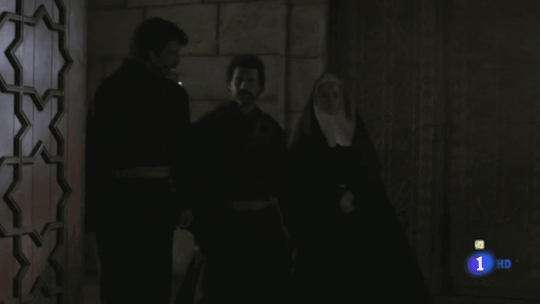


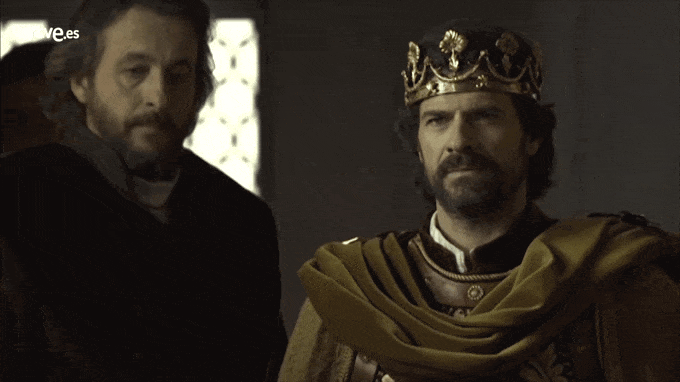
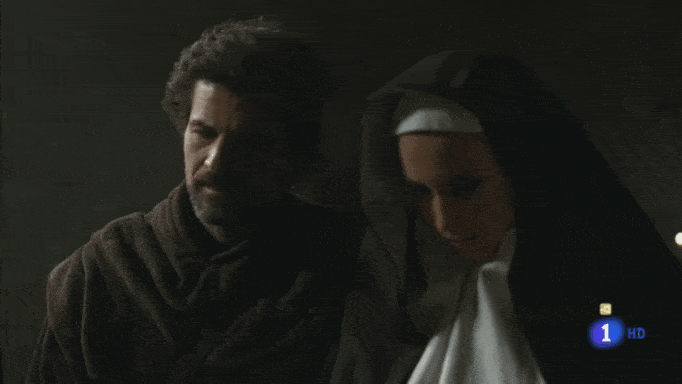

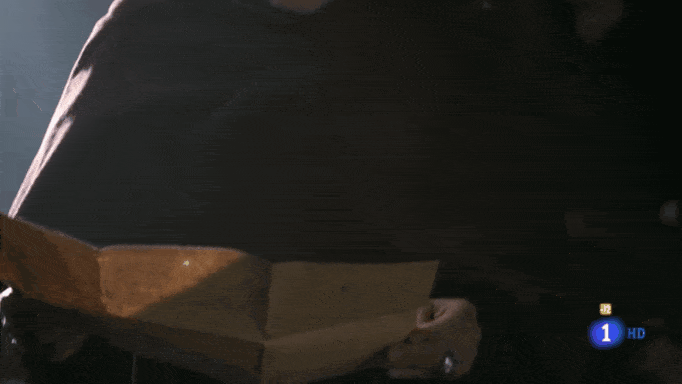


Juraría que la conozco de algo...
Isabel (2012-2014), 2×01 Desencuentros II El Ministerio del tiempo (2015-), 1×04 Una negociación a tiempo
#el ministerio del tiempo#isabel tve#1×04#una negociación a tiempo#2×01#desencuentros#nacho fresneda#aura garrido#rodolfo sancho#michelle jenner#eusebio poncela#ramón madaula#alonso de entrerríos#amelia folch#julián martínez#fernando ii de aragón#ferdinand ii of aragon#isabella i of castile#isabel i de castilla#cardenal cisneros#gonzalo chacón#francisco jiménez de cisneros#emdt#mdt
62 notes
·
View notes
Text
In Spain, ladies-in-waiting received a dowry from their royal mistress when they married. Princess Catherine, unable even to feed and clothe her household adequately, was consumed with anxiety over this. Ordinarily she could have expected marriages to occur between her women and the English nobility, for this was one way in which women acted as peace-weavers, strengthening alliances between countries. But her women were reliant on the goodwill of King Ferdinand, and on their own families.
The Princess was repeatedly and vocally concerned about the plight of her ladies-in-waiting. In 1505 she asked her father to pay María de Salazar, because she was unable to, and noted that six of her women had served her devotedly without any remuneration. In 1507 she again pleaded with Ferdinand for money for them, explaining that by now she had only five women in her service and that ‘they have never received the smallest sum of money since they were in England […] cannot think of them without pangs of conscience’.
Nicola Clark, THE WAITING GAME: THE UNTOLD STORY OF THE WOMEN WHO SERVED THE TUDOR QUEENS
#catherine of aragon#katherine of aragon#catalina de aragon#ferdinand ii of aragon#fernando ii de aragon
4 notes
·
View notes
Text
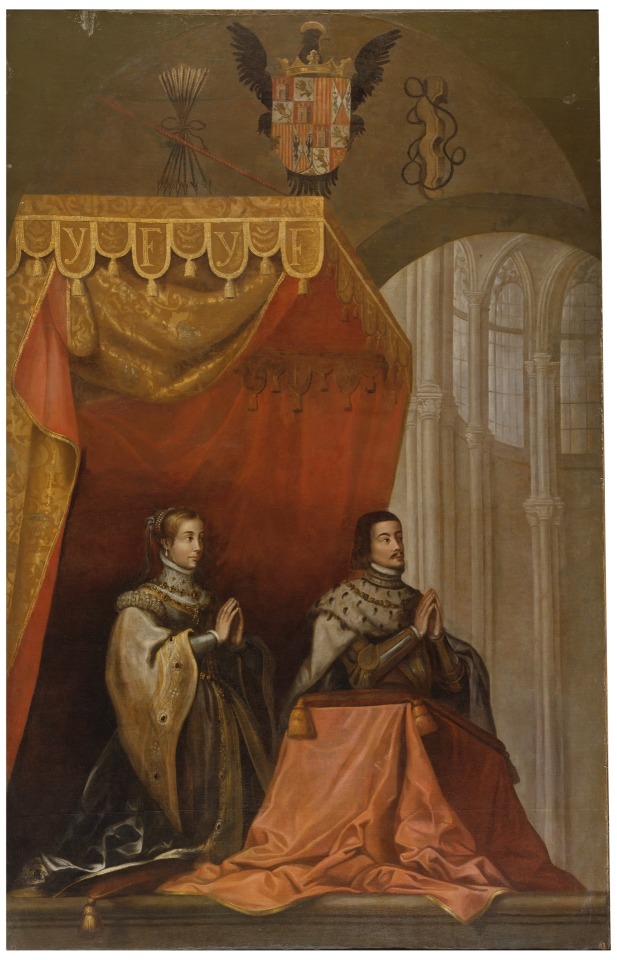
Los Reyes Católicos bajo un dosel. Anónimo, siglo XVII.
#museo del prado#monarquía española#reino de españa#reyes de españa#reyes de castilla#reyes de aragón#isabel la católica#reina de españa#fernando de aragón#fernando ii de aragón#fernando el católico#reyes católicos#casa de trastámara#kingdom of spain#house of trastamara
7 notes
·
View notes
Text
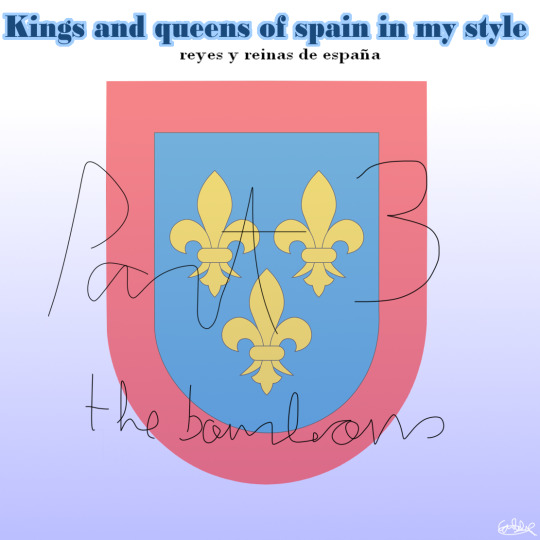
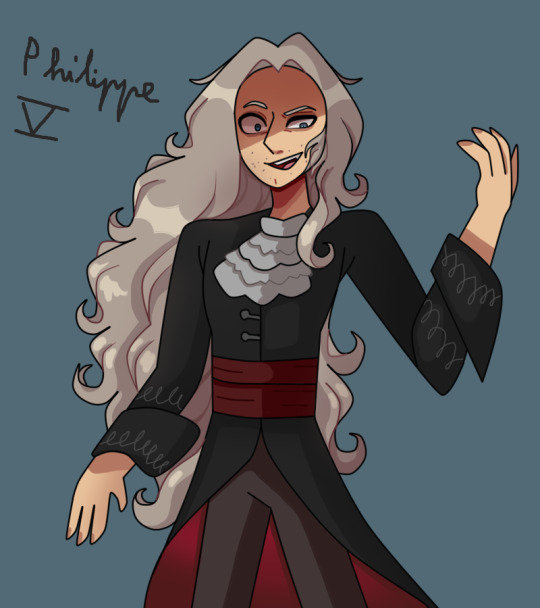

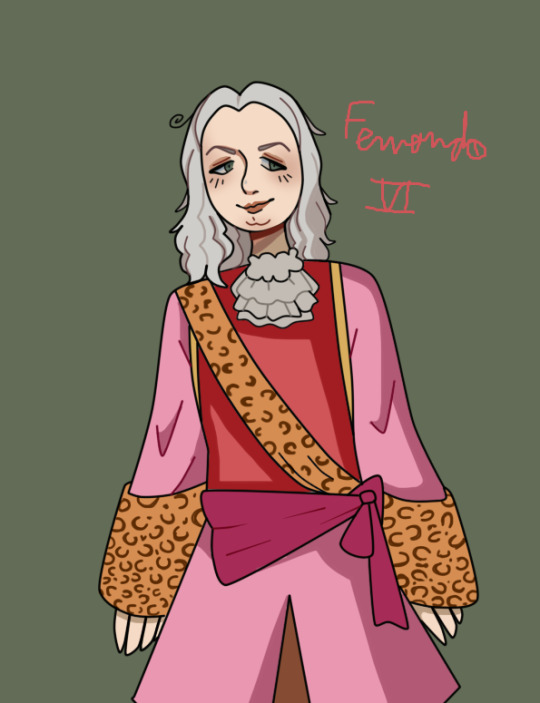




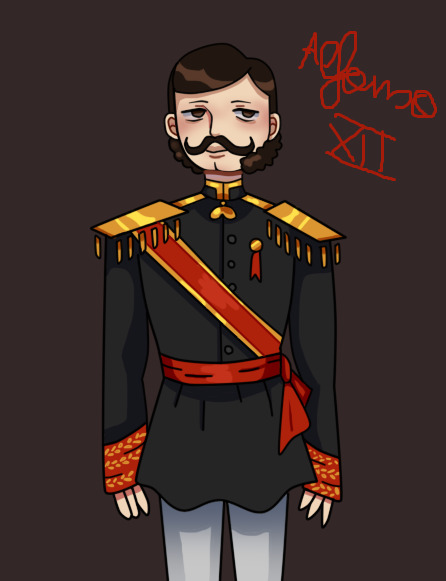
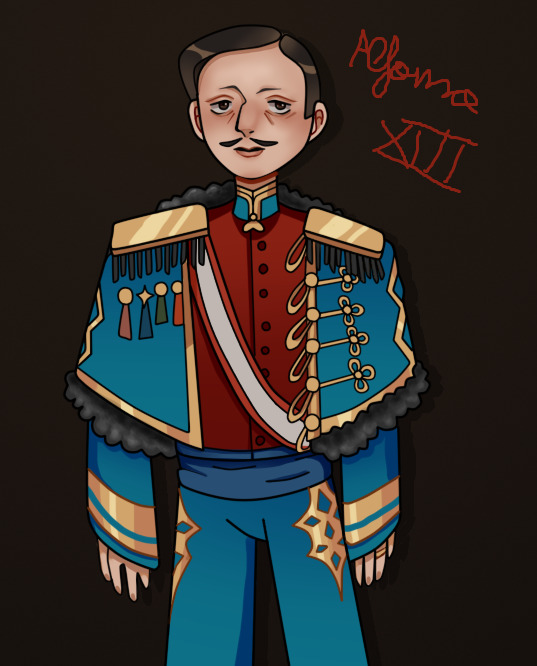
last part
#bourbons#felipev#felipe v#louis i#louis of spain#isabel ii#alfonso xii#alfonso xiii#spain#carlos iii#carlos iv#fernando vi#fernando vii
16 notes
·
View notes
Text
en cambio de tiempo felipe ii mira directamente a la cámara y habla con la audiencia para comentar, específicamente, algo sobre lo que el fandom estaba debatiendo en el momento de producción. el único otro personaje que hace algo así es pacino en tiempo de ilustrados y,,, me parece un parallel muy raro por parte de oliv*res
#emdt#mucho elena es blanca y julián es fernando el católico y felipe iv es mcnamara. bueno pues pacino es felipe ii.
9 notes
·
View notes
Note
1. Are you an albums person or a singles person?
generally "singles"! I take, judge, and sort songs one by one. Only a very, very few albums do I consider as wholes. Usually I just steal and repurpose my favorite songs from them.
#honorable mentions (list of all of the albums I occasionally listen through in order):#Soon It Will Be Cold Enough by Emancipator#Safe in the Steep Cliffs also by Emancipator#Nothing Perfect by Ghost and pals#Hawaii pt ii by Miracle Musical#China: A Romantic Journey by National Cinema Symphony Orchestra#a few Fernando Ortega albums (worship music)#and Floating World by Kalaido.#oh! and most recently Book of Fishes by sakanaction!#that's all of 'em to the best of my current memory
2 notes
·
View notes
Text

Michael Sittow
Fernando II de Aragón (finales del s. XV - principios del s. XVI)
Kunsthistorisches Museum, Viena
2 notes
·
View notes
Text
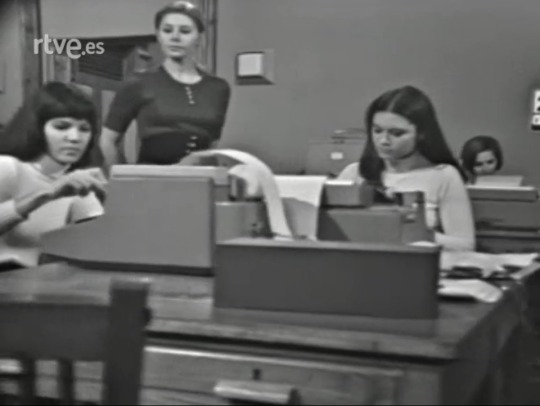
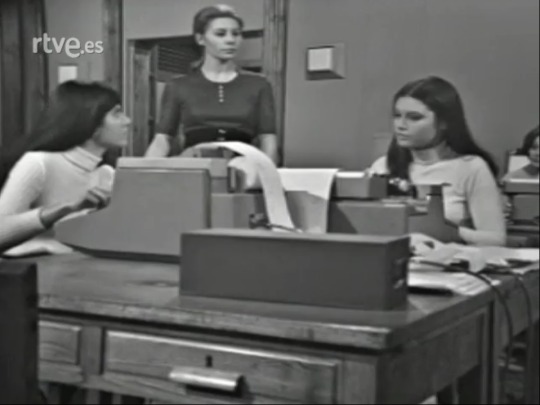




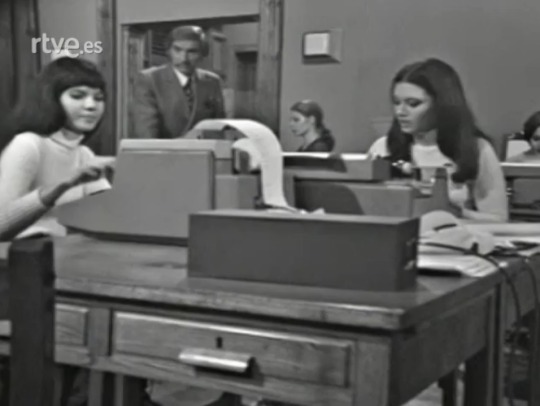

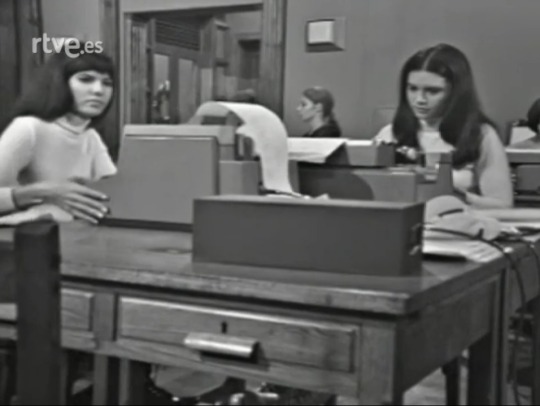

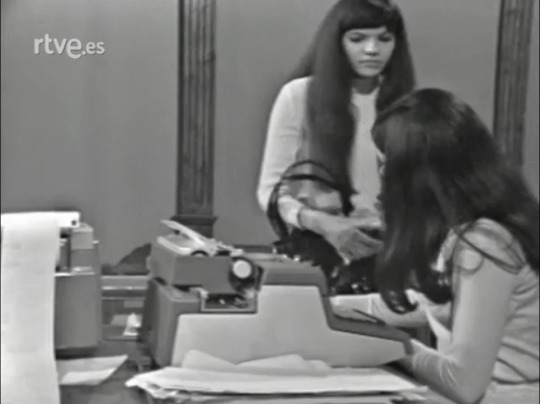





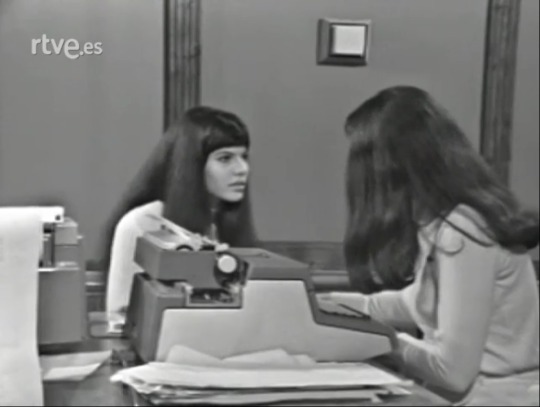







Del Dicho al Hecho, 1971 (part 2)
Spanish TV series aired in 1971, it is made up of 11 independent stories around a popular Spanish saying.
María Montez II starred in the 9th chapter called "Quien a Hierro mata, a Hierro Muere" which was aired the 26th May, she plays the role of Cuca.
In this chapter three very efficient employees are envied for this very reason by their immediate superior: Don Agustín.
Cast:
Fernando Fernán Gómez as Don Agustín
Lola Herrera as Mari Pili
Fiorella Faltoyano as Mari Loli
Teresa Rabal as Marisol
María Montez II as Cuca
SOURCES:
RTVE Play
IMDB
#María Montez II#Maria Montez II#María Montez Gracia Fiallo#Maria Montez Gracia Fiallo#1971#1971 María M#Del Dicho al Hecho#Quien a Hierro Mata a Hierro Muere#Fernando Fernán Gómez#Lola Herrera#Fioreya Faltoyano#Teresa Rabal#Spanish TV#1970s Spanish TV#actress#TV actress#spate actress#dancer#performer
10 notes
·
View notes
Text
Niche history ramble(also boy king mention at the end ofc) //
I was reading abt Maximillian I today, the second Habsburg emperor, bcs ive prev read about his father who I think is very interesting. But omg somehow this guy is even more interesting, but in a completely different way(I like his father Frederick III bcs I think his life is very funny ooc, but Maximilian I is genuinely really cool!) Also it's surprising to me that it took me this long to read about him, considering I very vividly remember seeing his portrait in a museum in Vienna. It's weird looking at it being used as the display pic for his wiki page bcs im like ...I've seen that in real life omg....
He's referred to as "The Last Knight"(as well as being nicknamed "Heart of Steel") And god I love now having random knowledge, cause I'm reading this like "ha, how very Don Quixote of him" and then the very next line in the biography was like, historians question whether he genuinely was like a knight or if he was a Don Quixotic figure 😭😭 glad to see I was on mark. Anyways, I wonder if Cervantes knew abt this, like I wonder if him being popularized as the last knight was a widely known thing back then. It's funny how Don Quixote was written at the end of the 16th century, but even back in the beginning of the century, being a knight was still kinda an outdated thing. I like how the two views on Maximillian I are either that he was the Last Knight or the first Rennaisance prince who had Machiavellian ideals. It fits into my weird obsession w those two works(The Prince and Don Quixote)
Anyways that being said. Boy King au Fernando is def like this, except he has literally nothing to back it up djfkkglg. Like at least Maximilian I was actually out there being insane. Fernando just sits in his cozy reading room, fantasizing while reading The Prince, and commissioning suits of armor as decoration(thats what he says. The real purpose is to dress up in them so he can feel cool.) I think this is honestly a reason he goes along with the marriage. He begrudgingly finds Seb's family history to be very cool and interesting, and he isn't opposed to being around it 🤭 Well, begrudgingly isn't the right word. He's very earnestly obsessed with it, but he can never tell Seb that bcs Seb will literally never let it go.
Seb just finds him staring up at paintings of Seb's ancestors, and Fernando, tears in eyes, hand on his heart, proclaims "I'll continue your legacy!!!" Seb is both mocking him like "he's not even your relative" but also has tears in his eyes like omg he's my family 🥺 he's accepted being my family 🥹
#suffering in silence: no one irl wants to hear my habsburg stories </3#im in an austrian studies class and im like omg right up my alley#and then all he talks about are sisi and franz josef SOB#this is very pretentious of me and ALSO a joke yknow#but he showed a family tree of the Habsburg. but it started at the top w maria theresa#so like. its not really a habsburg family tree. its the habsburg-lorraine tree :)#ik it goes back way too far for us to be able to meaningfully cover all of it or even a lot of it#but im like YOU KNOW THERES PEOPLE FROM BEFORE RIGHT??? 😭#as i said to my friends. if theres photographic evidence of this person then i am not interested#<- basically. pre 19th century guys are my favs :)#i mean i like josef ii and maria theresa but ideally my favs are early 1700s and earlier#well anyways#this comes hand in hand w my characterization of boy king stuff#like i read these and i am genuinely interested and want to regal it to other people bcs yay history!#but then my second thought is: okay how do i apply this to the boys#im getting deeper into fernando's characterization lately#i think hes the type to be like. i was born in the wrong century 😔#catie.rambling.txt#boy king au
9 notes
·
View notes
Text
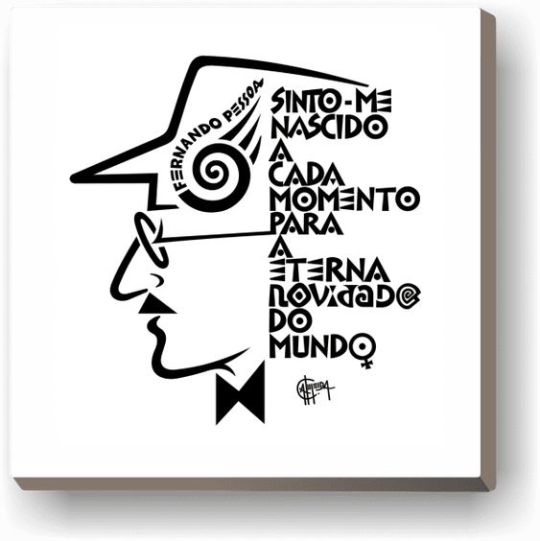
Alberto Caeiro
8-3-1914
― “O Guardador de Rebanhos”. In Poemas de Alberto Caeiro. Fernando Pessoa. (Nota explicativa e notas de João Gaspar Simões e Luiz de Montalvor.) Lisboa: Ática, 1946 (10ª ed. 1993).
. Foto: almanakedanemeton.wordpress
4 notes
·
View notes
Text







A guide through the monarchs of Aragon in La Catedral del mar & Los Herederos de la tierra
@asongofstarkandtargaryen
During the series the role of the members of the monarchy is secondary, but they are used to help to establish a concrete historical context and they're very determinant in the situation of the Puig and Entanyol families involving political estrategies of supporting this or that king, that gave them benefits or dacay (Arnau's rise with Pedro IV, Genís & Roger rise with Juan I and Martín I and Bernat with Fernando I). So, I wanted to make a recopilation of the monarchs shown during these series and their families.
House of Aragon/ House of Barcelona (descendants of the Jimena dinasty)
The Jimena dinasty is called like that because its origin was Jimeno "the Strong", grandfather of Eneko Arizta, and one of its branches was the Arista-Iñiga dinasty started by Eneko.
Eneko, his son García Iñiguez and his grandson Fortún Garcés were Lords of Pamplona, Fortún Garcés married Awriya bint Lubb ibn Musa (great-grandaughter of Musa the Great), and one of their daughters was Oneka Fortúnez, who married Abd Allah I of Cordoba (their son was Muhammad, who fathered the calipha Abd al-Rahman III with a basque woman called Muzna) and then Oneka married Aznar Sánchez de Larraún, and had a daughter with him, Toda Aznárez. Toda married Sancho Garcés I, the truly first king of Pamplona, was Sancho Garcés I (the first king of the Jimena dinasty).
Sancho Garcés III (992-1036) was king of Pamplona, Count of Aragon and king consort of Castile, whose bastard son with Sancha de Aibar, Ramiro I, inherited the counties of Aragon, Sobarbe and Ribagorza, and united them to form the kingdom of Aragon.
Then Petronila I (1136-1173), Ramiro I's great-grandaughter, married Ramón Berenguer IV count of Barcelona. Their son Alfonso II of Aragon was the first king of the Crown of Aragon and Pedro IV's great-great- great-grandfather.
In summary all the Aragonese monarchs are descedants of Eneko Arizta (and that's the way we can link Irati with LCDM/LHDLT)
Pedro IV
Pedro IV of Aragon, II of Valencia and I of Mallorca (Balaguer, Lleida, Catalonia, September 5, 1319 - Barcelona, Catalonia, January 5, 1387), called "the Ceremonious" or the Punyalet ('the one with the dagger', due to a dagger he used to carry), son of Alfonso IV of Aragon and Teresa de Entenza.
King of Aragon, Valencia and Mallorca (1344-1387); Duke of Athens (1380-1387) and Neopatria (1377-1387); count of Barcelona (1336-1387) and of Ampurias (1386-1387).
In 1338 he married María de Navarra (1326-1347), daughter of Felipe III and Juana II of Navarra. Offspring:
Constanza (1343-1363), married in 1361 to Federico III of Sicily, and Juana (1344-1385), married in 1373 with Juan I de Ampurias.
In 1347 he married Leonor of Portugal (1328-1348), daughter of Alfonso IV of Portugal. She died the following year of the Black Death.
In 1349 he married Eleanor of Sicily (1325-1375), daughter of Pedro II of Sicily. Offspring:
Juan I (1350-1396), Martin I (1356-1410) and Leonor (1358-1382), married to Juan I of Castile. Leonor was the mother of Fernando I of Aragon.
In 1377 he married Sibila de Fortiá, daughter of the Empordà nobleman Berenguer de Fortiá. Offspring:
Isabel (1380–1424), who married Jaime II of Urgel, future suitor for the aragonese crown.
During his reign the Aragonese expansionism in the Mediterranean continued, focused on southern Italy and Greece.
Although he was ally of Alfonso XI, Pedro IV had a great rivalry with his son Pedro I of Castile and fought against him in some conflicts, like the War of the two Pedros (1356-1369) and the first Castilian Civil War (1351-1369), in which Pedro I was supported by Pedro I of Portugal (one of his bastard sons, Juan I of Portugal, was the founder and first king of the Avis dinasty) and Muhammad V of Granada, and Pedro IV supported the bastard children of Alfonso XI with his lover Leonor de Guzmán (Pedro de Aguilar, Sancho Alfonso, Fadrique Alfonso, Enrique II of Castile, Fernando Alfonso, Tello, Juan Alfonso, Juana Alfonso, Sancho and Pedro Alfonso), who started several revolts against Pedro I of Castile. The wars ended when Enrique killed Pedro I, and he became the first king of Castile of the Trastamara dinasty.
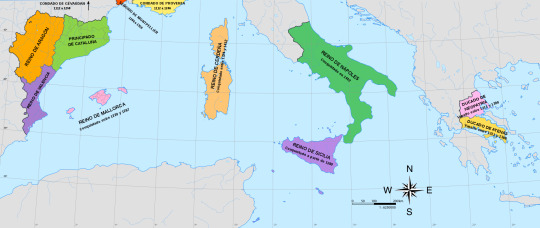
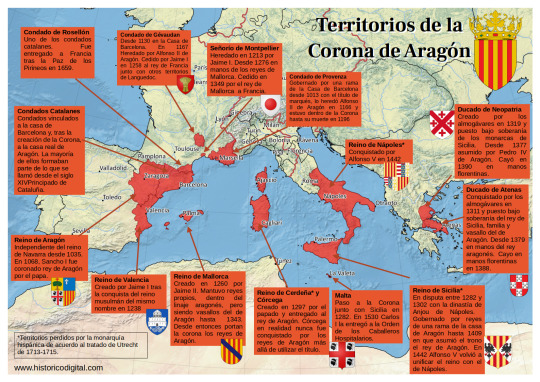
Sibila de Fortiá
Sibila de Fortiá (Fortiá, Girona, Catalonia, 1350 - Barcelona, Catalonia, 1406), queen consort of the Crown of Aragon (1377-1387). She was the daughter of Berenguer de Fortiá and his wife Francesca de Vilamarí. In 1371 she married for the first time Artal de Foces, an Aragonese nobleman, whom she widowed in 1374, and then she the lover of Pedro IV and had a daughter with him, Isabel.Pedro and Sibila married in 1377. After the wedding, Pedro surrounded himself with Empordà nobles as well as Sibila's relatives.
Pedro IV was very ill at the end of the year 1386, and Sibila, fearful of the wrath of the future King Juan, fled to the castle of San Martín de Sarroca (Barcelona), which belonged to her brother Bernat de Fortiá. There she was imprisoned by Juan I, who treated her harshly, accusing her of abandoning the king on his deathbed and of several robberies in the palace. She was confined in the castle of Moncada (Barcelona) until she renounced his property granted by the king. Finally, Sibila retired to the convent of San Francisco in Barcelona, where she died in 1406.
Juan I
Juan I of Aragon, called the Hunter or the Lover of All Kindness (Perpignan, Occitania, France, 1350 - Torroella de Montgrí, Girona, Catalonia, 1396), King of Aragon, Valencia, Mallorca, Sardinia and Corsica, and Count of Barcelona, Roussillon and Cerdanya ( 1387-1396). Son of Pedro IV and Leonor of Sicily.
His first marriage was with Marta de Armagnac (1347-1378), daughter of Count Juan I de Armagnac. With whom he had: Jaime (1374), Juana, (1375-1407) who married Mateo, Count of Foix. After the death of her father, she claimed the throne with her husband, but they were defeated; Juan (1376), Alfonso (1377) and Leonor (1378).
Widowed, Juan married Violante de Bar (1365-1431), daughter of Robert I, Duke of Bar. Offspring:
Jaime Duke of Girona (1382-1388), Yolanda, who married Louis II of Anjou, titular king of Naples. Their son, Luis III, claimed the throne after the death of Martín I, in the engagement of Caspe; Fernando Duke of Girona (1389), Antonia (1391-1392), Juan Duke of Girona (1392-1396), Eleanor (1393), Pedro Duke of Girona (1394) and Juan (1396)
Martin I
Martin I of Aragon, also called the Human or the Old (Girona, July 29, 1356-Barcelona, May 31, 1410), was king of Aragon, of Valencia, of Majorca, of Sardinia and count of Barcelona (1396-1420) and king of Sicily (1409-1410). Second son of Pedro IV of Aragon and his third wife Leonor of Sicily.
Martín was called "the Human" because of his great passion for the Humanities and books. The library of Martín I is the first that could be considered from Renaissance, if at that time in the history of the Iberian peninsula the term can already be used.
Martin married in 1372 with Maria de Luna, daughter of Lope, the first count of Luna, in 1374. From this union they were born:
Jaime (1378), Juan (1380) and Margarita (1388) and Martin I of Sicily "the Younger" (1376-1409), first husband of Blanca I of Navarra.
When Martin the Younger died, Martin married Margarita de Frades, although they left no issue.
His entire reign was marked by the Western Schism that divided Christianity since 1378. He was a supporter of the popes of Avignon (where he went the year of his coronation to swear allegiance to Benedict XIII "the Pope Luna", Pedro Martínez de Luna y Pérez de Gotor, with whom it seems that he came to establish a friendly relationship ), from whom he obtained support in his claims over the kingdom of Sicily against the Anjou, supporters of the popes of Rome. In 1400, he would marry his niece Yolanda to Louis II of Anjou in order to defuse tensions. He met in Avignon with the antipope Benedict XIII, Aragonese and a relative of the queen, with the intention of reaching a solution to the schism and, later, in 1403 he intervened militarily against the siege that Benedict suffered in his papal seat, rescuing him and welcoming him in Peñíscola .
House of Trastamara (the Aragonese branch)
Fernando I
Ferdinand I of Aragon (Medina del Campo, Valladolid, Castile and Leon, November 27, 1380-Igualada, April 2, 1416), also called Fernando de Trastámara and Fernando de Antequera, the Just and the Honest, was an infant of Castile, king of Aragon, Valencia, Mallorca, Sardinia, Count of Barcelona (1412-1416), and regent of Castile (1406-1415), during the minority of Juan II of Castile. Son of Juan I of Castile and Leonor of Aragon.
He was the first Aragonese monarch of the Castilian dynasty of the Trastámara, although he was of Aragonese origin on his mother's side.
He married Leonor de Alburquerque
Alfonso the Magnanimous (Medina del Campo, 1394-1458), king of Aragon, with the name of Alfonso V, and of Naples and Sicily, with the name of Alfonso I.
María de Aragón (Medina del Campo, 1396-1445), first wife of Juan II of Castile and mother of Enrique V of Castile
Juan II (Medina del Campo, 1397-1479), King of Aragon and King consort of Navarre.
Enrique (1400-Calatayud, 1445), II Duke of Villena, III Count of Alburquerque, Count of Ampurias, Grand Master of the Order of Santiago.
Leonor (1402-1445), who married Eduardo I of Portugal. Mother of Alfonso V of Portugal, Juana of Portugal (Enrique IV's second wife) and Leonor of Portugal, who married Frederick III of Habsburg (they were parents of emperor Maximilian I of Austria)
Pedro (1406-1438), IV Count of Alburquerque, Duke of Noto.
Sancho (1400-1416)
Alfonso V
Alfonso V of Aragon (Medina del Campo, 1396 – Naples, June 27, 1458), also called the Wise or the Magnanimous, king of Aragon, of Valencia, of Majorca, of Sicily, of Sardinia and Count of Barcelona (1426-1458); and King of Naples (1446-1458).
Alfonso V can be considered as a genuine prince of the Renaissance, since he developed an important cultural and literary patronage that earned him the nickname of the Wise and that would make Naples the main focus of the entry of Renaissance humanism in the sphere of the Crown of Aragon.
From his relationship with his lover Giraldona de Carlino, a napolitan noblewoman, he had three children:
Fernando (1423-1494), his successor in the kingdom of Naples under the name Fernando I.
Maria (1425-1449), married to Lionel, Marquis of Este and Duke of Ferrara.
Leonor, or Diana Eleonora (?-1450), married the nobleman Marino Marzano, Prince of Rossano.
Maria of Castile
María of Castile (Segovia, Castile and Leon, November 14, 1401-Valencia, October 4, 1458). Infanta of Castile, Princess of Asturias (1402-1405) and Queen of Aragon (1416-1458) for her marriage to Alfonso the Magnanimous. First daughter of Enrique III "the Mourner" and Catherine of Lancaster. Sister of Juan II of Castile, untie of Enrique IV and Isabel I.
The marriage between María and Alfonso is celebrated in the Cathedral of Valencia on October 12, 1415. The ceremony was officiated by the antipope Benedict XIII, who also granted the matrimonial dispensation for the wedding.
In 1420, when the king left for Naples for the first time, he left the government of his kingdoms in the hands of Maria as lieutenant general. The absence of the Magnanimous would last three years, during which María had to face the rapid deterioration of the economic situation in Catalonia, the territorial struggle with the Castilian Crown, as well as the conflicts of a social nature that shook her in different kingdoms. On his return to Aragon in 1423, Alfonso V began the war with Castile, along with his brother King Juan of Navarra. But her financial resources were exhausted and in 1429 Queen María had to act as a mediator between her husband and her brother, King Juan II of Castile, to put an end to the dispute. However, Alfonso's situation did not improve, due to the recession suffered by the Catalan economy and the social conflicts caused by it. The Courts of Barcelona in 1431 demanded from the king a series of measures to correct the enormous deficit of the Catalan treasury and trade. But Alfonso, fed up with these matters, returned to Italy and gave full powers to the queen as ruler of Aragon; he left the Iberian Peninsula forever on May 29, 1432. This marked Alfonso V's final break with the Crown of Aragon, which, however, he never renounced.
+ Bonus track (although he doesn't appear in this series)
Juan II
Juan II of Aragon and Navarra, the Great, or the Faithless according to the Catalan rebels who rose up against him (Medina del Campo, June 29, 1398-Barcelona, January 20, 1479) was Duke of Peñafiel, King of Navarre (1425-1479), King of Sicily (1458-1468) and King of Aragon, Mallorca, Valencia, Sardinia (1458-1479) and Count of Barcelona, son of Ferdinand I of Aragon and Leonor de Albuquerque.
From his first marriage to Blanca I of Navarra (daughter of Leonor of Castile and Carlos III of Navarra):
Carlos (1421-1461), Prince of Viana and Girona, Duke of Gandia and Montblanch, titular King of Navarra as Carlos IV (1441–1461), married Agnes of Cleves. He wrote the 'Chronicles of the Monarchs of Navarra', about the history of his antecessors, from Eneko Arizta in the 8th century up to the 15th century.
Juan (1423-1425)
Blanca of Navarra (1424-1464), first wife of Enrique IV of Castile
Leonor (1425-1479), married to Gastón IV de Foix, Queen of Navarre under the name of Leonor I.
From his second marriage to Juana Enríquez:
Leonor of Aragon (1448)
Fernando II (1452-1516), king iure uxoris of Castile (1474-1504) and then regent between 1507 and 1516, under the name of Fernando V due to his marriage to Isabel I, king of Sicily (as Fernando II, 1468-1516), Aragon and Sardinia (as Fernando II, 1479-1516), Naples (as Fernando III, 1504-1516), and from Navarra (as Fernando I, 1512-1516)
Juana (1455-1517), second wife of Fernando I of Naples. Her daughter Juana married Fernando II of Naples (Fernando I of Naples' grandson)
During his youth, Juan fought in the Castilian-Aragonese war (1429-30) and the Castilian Civil War (1437-1445) in the Aragonese team against Juan II of Castile, his son Enrique and the Constable Álvaro de Luna (favourite of Juan II), due to the Aragonese political influences in Castile and the full control that Álvaro de Luna had over Juan II of Castile that allowed him to become very powerful, so some members of the Castilian nobility wanted to remove Álvaro out of Juan II side because of that, and the Aragonese reacted to the anti-aragonese convictons of Álvaro.
Álvaro de Luna arranged a new marriage between Juan II of Castile and Isabel of Portugal (mother of Isabel I) in 1447. The constable intended with this dynastic alliance to strengthen the political ties that united Castile and Portugal against the common enemy: the Catalan-Aragonese Crown, but from 1449, Isabella of Portugal indirectly supported the maneuvers of the Great League of Nobles (allies of the Aragonese) formed against the constable. But it would not be until 1453 when Juan II of Castile, possibly tired of the continuous pressure from the aristocracy, left Álvaro on his own. It has often been said that it was the queen herself who demanded that her husband signed the prison order against Álvaro, through Juan Pacheco, Marquis of Villena.
By 1441 Blanca I de Navarra died and Juan II married the daughter of Fadrique Enríquez (one of his Castilian allies, the admiral of Castile), Juana Enríquez y Fernández de Córdoba.
After the death of Blanca I, a dispute between Juan II and Carlos de Viana about the sucession for the Navarrese throne. Juan was king Iure uxoris of Navarre and wanted to be keep his position as king, but Carlos and his supporters claimed that the prince was the rightful king as firstborn son of the queen and in 1451 the Navarrese civil war started.
In the following years the tension between Juan and Carlos increased with the birth of Fernando, who was pushed by his mother Juana to be the heir of Aragon and Navarra, which Juan later accepted. This change in the sucession was not accepted in Catalonia, that supported Carlos de Viana birthrights, and they started a rebellion against Juan II.
Other supporter of Carlos was Enrique IV, who offered his sister Isabel to Carlos in marriage as a sign of their alliance, but the wedding never happened.
Carlos died in 1461, although the war didn't ended because the Catalan nobility proposed other suitors for the Crown of Aragon and the Principality of Catalonia, like Enrique IV, Pedro of Portugal (grandson of Jaime II of Urgell) and Renato de Anjou during the Catalan civil war, that ended in 1472.
It's interesting that the interesting that the current situation of the Estanyol family at the end of Los Herederos de la tierra is that there are two brothers from different mothers, and whose father have benefited one of them over the other, so it may lead to tensions from the part that was not benefited, Arnau Jr is the main heir in Bernat's will, so maybe in the future Marta Destorrent will try to pit her son Baltasar against his elder brother to take Arnau Jr's place. By period of time I find very likely that this happens during the reigns Maria of Castile and Juan II, and the situation of the Estanyol succession could parallel the Carlos de Viana-Fernando II problem, although in this case the younger son was the benefited one and the one who inherited his father's kingdoms and maybe the Estanyols are part of the Catalan nobility that defended Carlos' birthrights, although some other Catalan nobles supported Juan II & Fernando alongside of peasants and smallfolk, during the First Remensa War during the Catalan civil war.
The Remensa War consisted in revolts organised by peasants who wanted to end the servitude to which their feudal lords had subjected them, so I think that probably the Estanyol-Llor family would support the peasants because of their backgrounds.
#la catedral del mar#los herederos de la tierra#the cathedral of the sea#heirs to the land#history#crown of aragon#aragonese monarchs#pedro iv de aragón#juan i de aragón#martín i de aragón#sibila de fortiá#fernando i de aragón#alfonso v de aragón#maria de castilla#juan ii de aragón#gifs#period dramas#house of aragon#house of trastamara#house of barcelona#long post
21 notes
·
View notes
Text




Rodolfo Sancho and Michelle Jenner as Fernando II of Aragon and Isabel of Castile in Isabel
#isabel tve#michelle jenner#rodolfo sancho#Isabel de Castilla#Fernando de Aragon#isabella of castile#ferdinand ii of aragon
33 notes
·
View notes